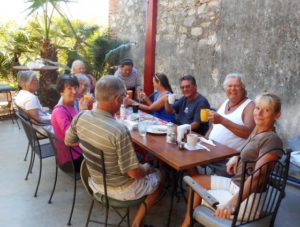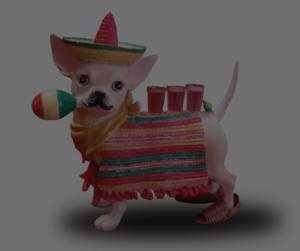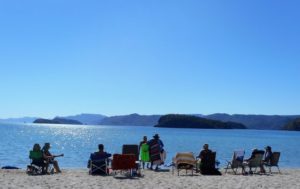
November 28, 2017 – We arrived in Los Barriles yesterday after a short drive from Rancho Verde. It is apparent that the gang will enjoy their 4 days at Baja Sunrise, truly the only seaside campground in the region. The RV Park is well laid out and always improving, Jorge the owner is keen to make improvements, next season he will have a pool. Guy & Glenda and Oscar & Barbara have already made arrangements to stay here after they drop off.

Hard to believe it was only 2 weeks ago that we were in Guerrero Negro and the gang took the Salt Tour, but time flies when you are on an adventure. San Ignacio was busy as expected when we arrived, a few Baja race teams there preparing for Baja Mil. Getting everyone parked was made even more challenging when a 40′ A Class motorhome took a short cut from Highway 1 to beat the Caravan to the lower parking area as we were just getting parked and an impatient RVer came in around the back of the group at the same time to park in his spot. Fun for all, glad it was really hot out as well, I just used my enduring charm. We took a short trip into town, I had some Ice Cream and later we had dinner and the entire group had a Margarita (except Lisa and I).
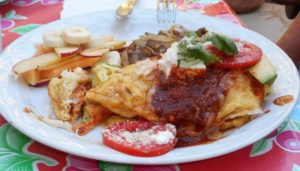
Next day off to the beach and the Bay of Conception for 3 days on Playa Santispac. Our friends, Wagon Masters & Tail Gunners, Mike & Kelly were already there set up. We found a spot where we could all park, the weather was perfect, warm, hot, sunny with no wind. The SUP and Kayak came off the roof of the Van, Oscar & Barbara also took their equipment off and everyone tried something out including floating chairs which take little effort and lots of fun.

We had dinner at Armando’s a couple of times including Friday night when Fast Eddy and the Slow Learners showed up to entertain. On our beach tour excursion we dropped by Gord & Gwen’s. Folks were very impressed with their set up and Gwen’s Studio. Gord was very gracious and offered the gang a cold beer, Mi Casa Su Casa for sure. Lots of fun and memories made on Playa Santispac.
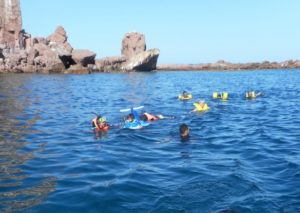
Our next stop is Loreto and the Rivera del Mar RV Park. Parking can be challenging, not this time, with only 5 RVs and lots of room it went fast. Headed to the Super Ley for some supplies and ATM later in the afternoon. The next day Mike & Kelly joined us in Loreto and the entire group went to the Happy Hour at the Mision Hotel on the Malecon. Lots of fun and inexpensive refreshments, great intel when you know it is there, thank you Luis & Cindy.
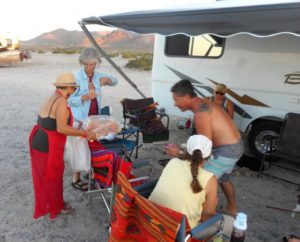
Everyone was up to the drive to San Javier, road was in great shape and all the repairs had been made. Clearly San Javier has become popular destination, including the 350 year old Olive Tree planted by the Jesuits, they are building an entrance and will be asking for donations. Our last evening was spent for dinner at the Giggling Dolphin, Ubaldo was a great host a always and the boys played every tune we asked them for. Their rendition of a popular Santana song has improved immensely since Dave & Darlene 1st requested it years ago.
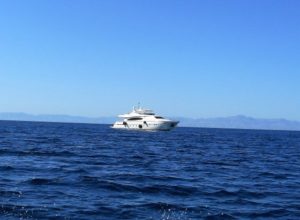
8am departure on Day 14 as our destination was La Paz. The drive was uneventful and we encountered no road construction, 1st time since started Baja Amigos in 2009 WOW! Shortly after arrival we learned Cindy & Jose had moved to Texas in August with no known return date, apparently medical issues. This was quite a shock to Lisa & I as we have become friends with them over the last 9 years and always look forward to seeing them each season on our return. The next day we took the group into town, a stop a Ibarra’s Pottery and drop off at the Mercado. Lisa and I went to the Allende Book Store to pick up our map books for the 45 Day tour and get some intel on Carnaval, apparently it may not be on the Malecon, we will see.
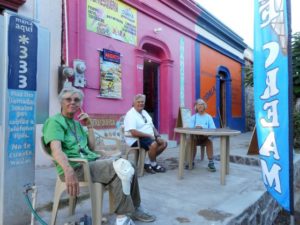
We had lunch at a roadside taco stand and headed to Home Depot in search of new blind for the kitchen table window, the current one expired. The entire group went for dinner at Los Magueyes, the food was good, Ricardo entertaining and lots of fun. The next day we were off to Tecolote. We had a new grocery stop at Soriano, this worked out well. Parking was fairly straight forward and the selection was good, a nice change from Walmart.
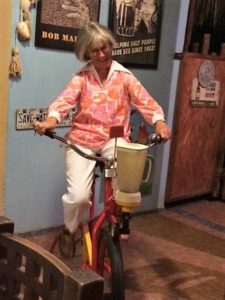
Tecolote was calm with a few RVs on the beach. Sunny warm with little wind. Not the most common feature of this beach. Lots of swimming, some hiking, floating and beach walking, rest and relaxation. Our 3rd day we headed out to see Isla Ispiritu Santos and swim with Sea Lions. I had never done his and looked forward to the experience. I was not disappointed. Although I did not choose to swim with the Sea Lions watching other was fun and I enjoyed the whole tour immensely.
Leaving Tecolote we headed back onto the Truck Bypass on our way to Rancho Verde. As we turned onto the bridge Guy & Glenda picked up a local policeman who wanted more than their autograph. We confirmed the light was flashing green, not red. With Oscar engaging the cop in Spanish and me speaking in both Spanish and English we made it clear, no wrong doing and no funds forthcoming. Guy was given a warning and sent on his way. many other RVers left on there own have coughed up $100 USD in the same circumstances, which is why the local police continue to prey on tourists.

We made our 10am reservations at the Café El Triunfo. Good thing we arrived when we did, a piano concert was underway at 11am so lots of tourists had showed up for that as well. Brunch was great, Lisa and I had our usual and rest had a good selection of menu items. After a walkabout we headed for Rancho Verde, very hot when we got there, not so much when the sun went down. We had fun Happy Hour and Oscar and Barb had a small fire, which helped keep us warm. The gang really enjoyed Rancho Verde and what it had to offer, not always the case with our groups.
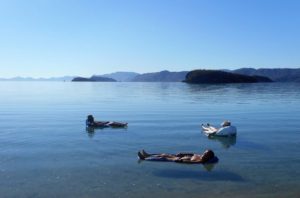
Day 2 in Los Barriles, Lisa and I are going to check out the house we rented for the kids later today.
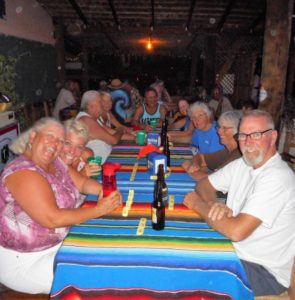
Did you know?
The Cardon Catctus of Baja California is dominant on he peninsula. “Cardo” means “thistle” in Spanish. It is said that when Hernando Cortés attempted to establish a settlement in Baja in 1535, the many spiny cacti earned it the name “Isla de Cardón”, because at the time, they believed the peninsula was an island. In Latin, “pachy” means thick and “cereus” means waxy. One has only to see the thick arms of this pale gray-green, waxy skinned cactus to understand what the traveling American botanist, Cyrus Pringle, meant when he named the species.
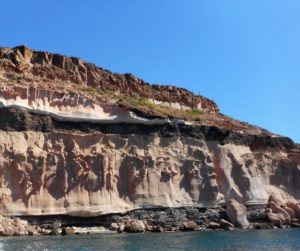
There are about 1200 species of cactus, all of them native to the Americas. Many first-time visitors to Baja mistake this giant cactus for the ecologically similar Saguaro cactus (Carnegiea gigantea), another inhabitant of the Sonoran Desert. However, the saguaro does not live in Baja and while there are a few stands of Cardón found across the Gulf of California on the Mexican mainland, they seldom occur near the saguaro.

The giant Cardon cactus (Pachycereus pringlei) is the emblem of the Baja California peninsula. It is a majestic plant, widely distributed over the entire peninsula and often occurring in dense stands. It is difficult to visit Baja California without being exposed to scenic views framed by this tree-shaped cactus. Because the peninsula is sparsely populated and many of its areas are remote and difficult to access, most populations of Cardon have remained intact through five centuries of European settlement. The first description (1768) of Cardon was by the founder of Mission San Javier, the Jesuit priest Miguel del Barco, near the town of Loreto.
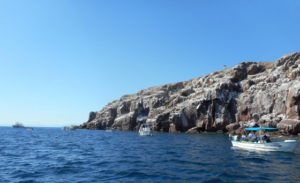
The Cardon is one of the most massive of all cacti. An average mature Cardon may reach a height of ten meters, but individuals as tall as eighteen meters are known. It is a slow growing plant with a life span measured in hundreds of years, but growth can be significantly enhanced in its initial stages by inoculation with plant growth-promoting bacteria such as Azospirillum.
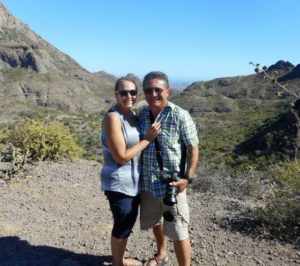
Most adult Cardon have several side branches that may be as massive as the trunk and the resulting tree may attain a weight of 25 tons. Adult Cardon is well adapted to the harsh climate of Baja California, characterized by drought and high temperatures, but as a seedling and juvenile it depends for survival on nurse plants, such as mesquite (Prosopis articulata). In alluvial soils in southern Baja California, the Cardons, and other cacti, occupy an extensive area.
